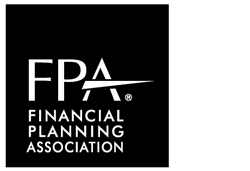The Power of the In-Home Meeting
Подписаться на актуальные новости
In my blog, and its companion Journal of Financial Planning article titled, “How to Deliver Empathetic Service and Gain Client Loyalty,” it’s emphasized that a client transforms from a revenue stream to an asset in the presence of loyalty. Each loyal client that tells others of his or her experience with an adviser’s service package represents a vine of fruitful relationships.
The common thought is loyalty begins after the planning and investment solution is executed, service experiences occur, and benefits result. In fact, client loyalty can begin during the sales process.
Bringing Balance to a Fledging Relationship
A relationship has a greater chance of success when there is balance between the two parties. Unfortunately, a wealth management relationship is inherently imbalanced because the prospect is asked to divulge private financial, family and personal details while the adviser is not expected to reciprocate.
The typical meeting in which the prospect sits across a table from the adviser (or worse on the other side of a desk) introduces unnecessary barriers to making the fact-finding process more free flowing. An in-home meeting strips these barriers away.
A Powerful Tandem
An advisory firm’s marketing program reaches a higher ROI by increasing the sales yield from one funnel stage to another. My last blog suggests that during the interest-qualifying stage, the adviser prepares a tailored education presentation (free of charge) for the client’s number one identified need, anxiety, or aspiration. This allows the prospect to “test drive” the adviser’s services and measurably de-risk the impending relationship decision.
Taking this one step further, conducting this “test drive” in the prospect’s home significantly increases the yield in turning a prospect into a client. This combination sparks client loyalty.
The Real Productivity Measure
An adviser may view an in-home meeting as an inefficient marketing step given the overhead of driving to and from the prospect’s residence. While this meeting takes, say, three times as long to conduct from beginning to end compared to one where the prospect comes to the adviser’s office, this is a misplaced analysis.
The marketing plan’s ROI should be measured on the time it takes a lead entering the funnel to becoming a client. Using this more realistic business measure, an in-home meeting often dramatically decreases the time to a successful close.
Prospects appreciate the increased effort to come to their home and it conveys important messages such as: “I’m valued as a person not just as a business transaction,” and “My needs and anxieties merit this attention.”
Visiting a home is also a treasure trove of information for an adviser:
- Neighborhood demographics
- Family lifestyle
- Family structure
- Family interactions
- Hobbies and collections
Keys for Successful In-Home Meetings
- Standardize the structure. Formulate a workflow process for conducting the meeting such as a pre-meeting mailing, an agenda, a presentation leave-behind and a checklist of next steps.
- Make the offer. For some people, an in-home visit pushes privacy concerns. If there’s reluctance, explain the meeting’s purpose, particularly the decision at hand (for example, “You’re entrusting your wealth and peace of mind to me, and I want you to be as comfortable as possible”). Highlight that it is a standing offer for any future meeting.
- Remove the hosting stress. The meeting’s purpose is to provide education on the prospect’s top need or concern and not about creating stress for the meeting itself. Offer to bring refreshments such as coffee plus baked goods if your meeting is in the morning, a light snack if your meeting is in the afternoon, or dessert if your meeting is in the evening.
- Meeting precision. Conducting the meeting with precision conveys the value of your prospect’s time. This means being on time, managing to the agenda and having organized materials.
It’s a Relationship!
While financial services is the content, what’s actually being bought and sold is a relationship. Face-to-face meetings are critical components of due diligence. For the prospect, this involves the adviser’s personal presentation, relatability, trust, care and concern. These core decision criteria come alive when an adviser invests his or her time in a meeting at the prospect’s home.
A prospect contemplates a substantial financial commitment when seeking an investment relationship—for a high-net worth family, this will be thousands of dollars per year. Taking the time to meet in a prospect’s home expresses appreciation for this opportunity and shines light on the adviser’s service role.
 Kirk Loury President
Kirk Loury President
Wealth Planning Consulting Inc.
Princeton Junction, New Jersey
Подписаться на актуальные новости
Все анонсы актуальных новостей на нашей странице в Facebook






